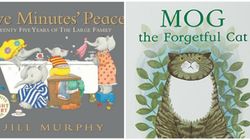Overheating is a sure-fire way to prevent a decent night’s sleep. While it might be tempting to ditch PJs altogether in warmer weather, your housemates probably won’t appreciate you lounging around in your birthday suit. The solution? …
Tag: sleep
When To Exercise (And How) For A Better Night’s Sleep
Physically tiring yourself out may seem like a logical way to get a good night’s sleep, but exercising too close to bedtime could have the opposite effect.
“Strenuous workouts can stimulate the body and increase our temperature, which can make it difficult to nod off,” explains Alasdair Henry PhD, research manager at Sleepio, an NHS-approved digital sleep-improvement programme.
We should avoid intense exercise two hours before bedtime to get the best night’s rest, he says. “A drop in body temperature is an important cue for sleep, so counteracting this process with exercise may keep you awake,” he tells HuffPost UK.
[Read More: What food to eat (and when) for a better night’s sleep]

While there is limited research into how exercise affects sleep the few studies in this area do show working out can help improve sleep, says Henry – providing you do it at the right time of day. “Moderate aerobic exercise can help you fall asleep faster, improve sleep efficiency and sleep quality, and also make you feel more rested in the morning,” he says.
Although the reasons for these effects are unclear, the benefits are thought to be due to a drop in the body’s temperature in the hours after exercise – which may make it easier to sleep. Exercise can also help improve our mood and reduce feelings of anxiety, Henry adds.
It makes no difference whether we workout in the early morning or afternoon, the research shows – it’s only working out immediately before bed that can be troublesome. If you already work out later in the evening, however, and haven’t found that it affects your sleep, then there’s no need to change your routine.
More from HuffPost UK Life:
But it’s not just a one-way relationship between sleep and exercise. Personal trainer Dom Thorpe argues that just as exercise can potentially improve sleep, so sleep can also improve how we experience exercise. “Exercising requires recovery time, which is best done when asleep,” he tells HuffPost UK.
In order to reap the biggest benefit from sleep, Thorpe says you should keep your workouts varied. It’s important to cover the three main types of exercise –cardiovascular, resistance (strength) and flexibility (yoga or similar) – he advises.
Thorpe agrees with Henry that in an ideal world, we would “train, eat and sleep in that order”, but points out modern life doesn’t always allow us to stick to this routine. “As an alternative, a great way to lead you into a deep sleep would be to do a relaxing form of yoga such as Yin shortly before bed,” he says.
READ MORE:
Royal Baby: Prince William Welcomes Harry Into ‘Sleep Deprivation Society’ Of Parenting
The Duke of Cambridge is “absolutely thrilled” about the birth of the Duke and Duchess of Sussex’s son – and can’t wait to meet him. Prince William’s comments come a day after Meghan Markle and Prince Harry welc…
Does Lush’s £9 ‘Miracle’ Sleepy Lotion Really Give You A Good Night’s Rest? I Put It To The Test
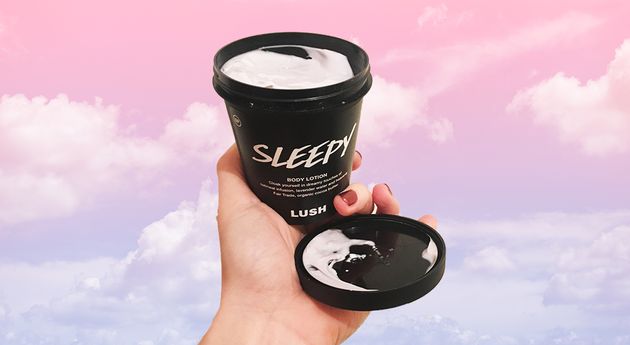
I’ve struggled to fall asleep for as long as I can remember. As a kid I would wake my parents up constantly to tell them so, in my teens I was restless, and now, as a 28-year-old, I’ve still not mastered the art of catching zzzs. For at least an hour each night, I lie in bed with my eyes squeezed shut willing myself to nod off. I mull over things that happened in the day and fret about the future. Once I’m asleep I’m fine, it’s just actually nodding off that I struggle with.
I’ve tried to reduce my bedtime anxiety in many ways: sometimes I take herbal sleeping tablets or listen to the sound of rain on YouTube; sometimes I have a “wind down” hour like I’m a toddler where I avoid watching TV or using my phone; and ultimately I try to tell myself that if I stop stressing about falling asleep then maybe I actually will.
TL,DR: I’m desperate. So when I hear about Lush’s ‘Sleepy’ body lotion, touted as a “miracle cream” that has supposedly helped hoards of insomniacs fall asleep, I decide (somewhat dubiously/doubtfully) to give it a go.
[Read More: I tried Silent Night’s £15 anti-snoring pillow so my partner could finally get some sleep – here’s what happened]
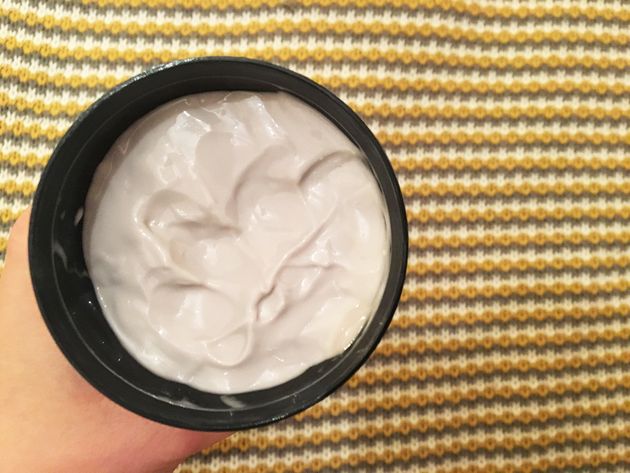
The moisturiser is a mix of “gentle oatmeal infusion, calming lavender flower and comfortingly sweet tonka”, but smells sweet and a bit like cinnamon. Sleep expert Richard Jolie says on Lush’s website that the mix of these ingredients work well to soothe the mind and help people doze off. Lavender is the key here – studies have shown it can induce relaxation by decreasing our heart rate and blood pressure.
I’m going to testthe lotion for a week to get reliable results – and try and keep an open mind. “What, so you’re going to fall asleep just by putting on moisturiser?” my flatmate jokes, but, after reading the ingredients, she concedes: “Oh, lavender? Mate, you’re going to be out for the count tonight.”
In winter, all you want to do is be wrapped up under a duvet, so spending 15 minutes before bed standing in the cold rubbing lotion all over my body is a challenge in itself. I wonder how much of a difference moisturising my legs will have on my sleep pattern, but hey. As I crawl under the duvet moments afterwards, I can already feel my eyes drooping. I debate whether it’s because I had a busy day at work or a hard gym session, but before I come to a conclusion I’m asleep.
Related…
This continues for the next few nights. I apply the lotion along my chest, arms, neck and face rather than my whole body (which doesn’t feel necessary), and the impact is the same as night one. My mind isn’t tired when I get into bed, but for my body it’s a different story. It’s like inhaling the lavender with each breath helps me to wind down into that perfect, drowsy, pre-sleep stage. Instead of my usual hour of tossing and turning, I’m out like a light within about 25 minutes.
But it’s not all plain sailing till morning. Now, I’ve got a new obstacle: waking up several times in the early hours and being unable to fall back to sleep immediately, which is something I’ve never experienced before.
On the fifth night of my trial, I decide not to use the lotion to compare how my sleep differs. I haven’t had a particularly busy day but feel unusually tired as I get ready for bed. To my surprise, I fall asleep within 20 minutes without using the lotion – super speedy for me.
I return to using the lotion for the remainder of the week: on night six, I go out like a light, while on the seventh, after a particularly stressful day, I struggle to fall asleep – maybe this would’ve been longer if I hadn’t used the lotion, who knows?

Having a good or bad night’s sleep is down to so many factors: your state of mind, what you did that day, what you ate, what you did before bed, what you’re doing the next day (and how you’re feeling about it) – so despite having an unusually good week of sleeping, I can’t put this success solely down to a lotion.
That said, Lush does what it says on the tin. The brand doesn’t claim to “cure” insomnia. It doesn’t promise to get you to sleep within minutes and it definitely doesn’t promise you eight hours in the land of nod. “Slather on this gorgeous pale purple lotion, breathe in its sweet, comforting lavender and tonka perfume, and you’ll instantly feel at ease,” Lush says about the product, adding: “It’ll hush your thoughts ready for a peaceful night’s sleep.”
Slathering on a pleasing, soft scent onto my body before bed is an evening ritual I begin to enjoy. The smell instantly relaxes me and the feeling of my soft skin against my dressing gown makes me feel cosy and warm. The simple act of doing something to aid my sleep – taking those few minutesfor myself – probably has a lot to do with it. The lotion gives me a sense of control over my bedtime habits and puts me in a positive state of mind as I snuggle down. So it’s a ritual I’ll carry on, but mostly on those days that I really need to focus on self-care.
CBeebies Is Starting ‘Bedtime Hour’ 15 Minutes Earlier – And Parents Are Livid
CBeebies has extended its popular bedtime hour – rebranding it as ‘CBeebies Bedtime’ – to run from 5.45pm until 7pm, rather than its former 6pm start. But parents aren’t happy about it.
The BBC kids’ programme has added a new show to the slot ‘Moon & Me’ – a charmingly sleepy programme from the creators of ‘In The Night Garden’, which will kick off at the earlier time of 5.45pm.
[Read More: CBeebies refers to snowmen as ‘snowpeople’ and people think it’s one step too far]
“My children are OBSESSED with your new show Moon and Me… It’s brilliant btw, we all love it!” 😍
NEW episodes now in orbit on @BBCiPlayer and joining #CBeebiesBedtime schedule every weekday! 🙌@MoonandMeHQpic.twitter.com/yoskqn3Xqz
— CBeebies Grown-Ups 🎉 (@CBeebiesHQ) February 4, 2019
The Bedtime slot involves gentle, slow-paced shows – the idea being that it winds kids down. There’s no action-packed ‘Go Jetters’-style explosions and high-octane adventures, just ever such a lot of pleasantness.
Routine is important and a lot of households integrate ‘Bedtime Hour’ into their children’s nighttime routine (the clue is in the name really) – so the change has caused some parents to be pretty upset. Livid, in fact.
can’t believe cbeebies changed the bedtime hour to 5:45 instead of 6, absolutely livid x
— charlie knows nought (@willnpegme) January 15, 2019
CBeebies are changing their bedtime to 5.45 what kid goes to bed that early I want one😐😐😐😐
— toni (@toniizatt) February 3, 2019
Woah bedtime starts at 5.45 on cbeebies now?! We’ll all still be in rush hour traffic!
— Felicity Bub Mumma (@FelicityBub) February 5, 2019
This is going to be the most “mum” thing I ever tweet, but bedtime hour starts at 5.45 now on CBeebies?!?!? I’m lucky if ava has her dinner before 6! What sort of angel child is getting ready for bed at 5.45 and where can I get one???????
— Ellice Manning (@elllice) February 4, 2019
Right.
Parenting is tough, and changes can sometimes feel like challenges, but part of me can’t help but think this is the biggest non-problem ever. It still goes until 7pm. The end of it – the bit where your child goes to sleep – is at the same time as ever it was. The only difference is that ‘Bedtime Hour’– this free thing given to you and your child every day – is 15 minutes longer. That’s all that has changed.
They’re not saying children should be going to bed at 5.45pm – just as when it started at 6pm, they weren’t expecting children to be going to bed at the beginning of the programme.
The most straightforward solution is turning the TV on at 6pm like parents did before and having a completely unchanged experience. Problem solved. You can do the same thing as you did before.
If CBeebies had reduced it to ‘Bedtime Half-Hour’, I’d understand why parents would get angry. If they cancelled it entirely and ran an ‘Embarrassing Bodies’ compilation then yeah, that would be a case for a strongly-worded letter and a rethink.
But this, this is nothing, nothing at all.
CBeebies Bedtime now starts at 5:45pm. That’s the hammer! Get them little bastards in bed ASAP.
— Ginge Knievil (@GingeKnievil) February 5, 2019
Related…
The Best Women’s Pyjamas To Keep You Warm This Winter
When the weather is this cold there’s just one thing we want to do: hibernate. And no early night (or lazy day) is complete without super soft, long-sleeved, cosy pyjamas.
Here’s our pick of some of the snuggliest on the high street at the moment. Pair with a water bottle and show that snow who’s boss.
Just Keep Lounging
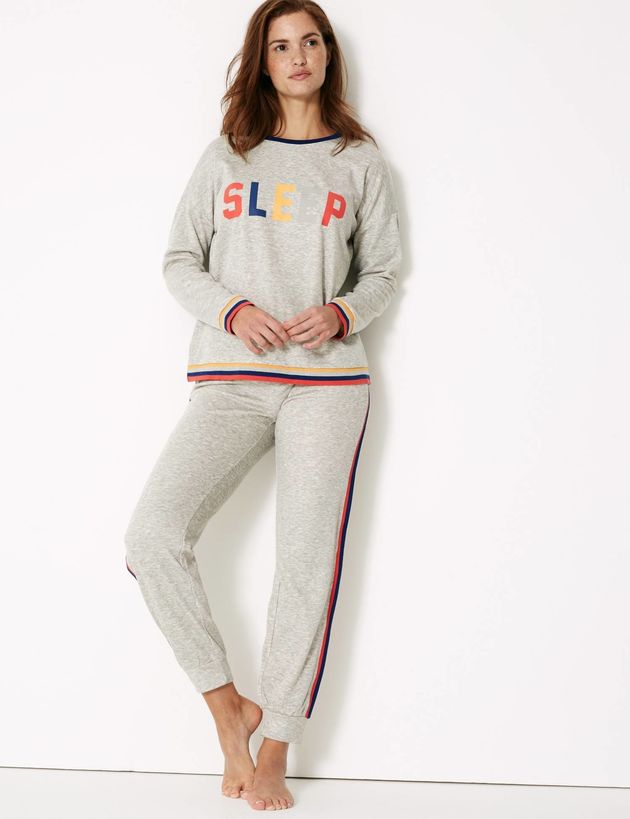
Sleep Slogan Lounge Set, M&S, Top, £20, Bottoms, £20
This sweatshirt with jogging bottom-style trousers is the perfect set to take you from sofa to bed. Ideal for a cosy night in front of the telly. Popcorn optional.
Buy them here.
Check It Out
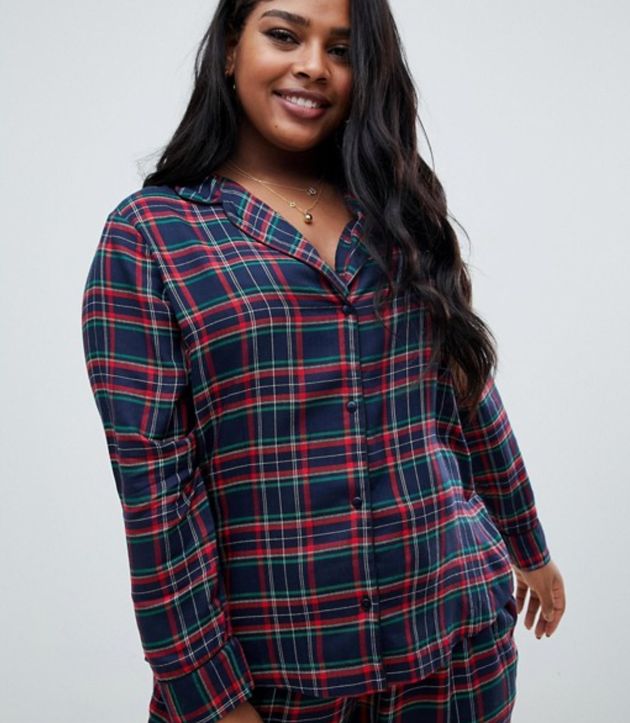
ASOS DESIGN Curve Mix & Match Check, ASOS, Shirt, £16, Trousers, £14
Checked pyjamas are practically a wardrobe staple. This pair looks so comfy, we’re not sure we’ll ever want to get dressed again.
Buy the set here.
Pyjama Llama Party
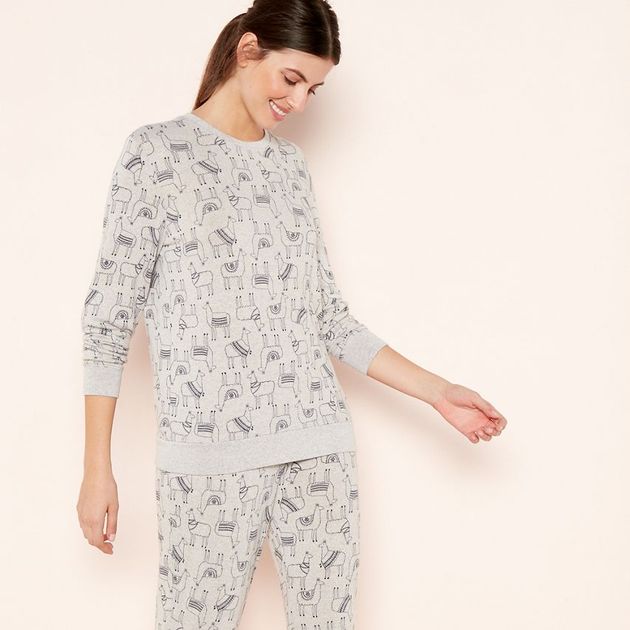
Grey Llama Knit-Look Pyjama Set, Debenhams, £24 (was £30)
We’re not entirely sure why llama prints are taking over homeware and now loungewear, but we’re into it. This set is in the sale, so don’t hang about.
Buy it here.
‘Sea’ You Tomorrow

Seahorse Long PJ Set, Chelsea Peers NYC, £35
If you love a splash of colour, this pink and turquoise set is for you. We’re loving the quirky seahorse print.
Buy the set here.
Ahoy there!

Navy Stripe Women’s Tie Waist Pyjamas, Next, £25
These PJs are slightly lighter weight than some in our roundup, meaning you can wear them into spring. The long sleeves should keep you toasty for now though.
Buy them here.
Flower Power

ASOS DESIGN Abstract Navy Floral Trouser Set, ASOS, £22 (was £28)
Pyjamas don’t just have to be functional: this set is also super stylish. Better yet, the set is made from sustainable beech-tree pulp, which uses less water and less waste than other traditional PJ materials.
Buy the set here.
READ MORE:
I Tried Silent Night’s £15 Anti-Snoring Pillow So My Partner Could Finally Get Some Sleep – Here’s What Happened

I always knew I was a snorer. It’d been mentioned on long car trips by family growing up, and I assumed it got somewhat worse in my late teens after my step-sister inadvertently broke my nose in a back garden game of catch gone wrong (who’s to blame, we’ve never decided).
Thanks to my wife, however, it’s been made very clear that my snoring is lethal. As a stretched and exhausted primary school teacher, her sleep is vital not just for her but indeed for the future of our nation, and so we’re always scouting for ways to reduce my snoring (and guilt), and reduce her stress. I’ve tried nose strips, sleeping different ways, even in different rooms.
“Annoying, constant and a little bit like a plane taking off” is how my wife chose to describe my vice for this piece. “It’s very loud and doesn’t have a consistent pattern, which actually makes it even more annoying.”
How does it disrupt her sleep? We’re at the point where we regularly go to bed at different times so she can settle in before I ruin everything. I’m told when the snores get bad, she can’t block them out.
So could Silentnight’s anti-snoring pillow save our sleep?
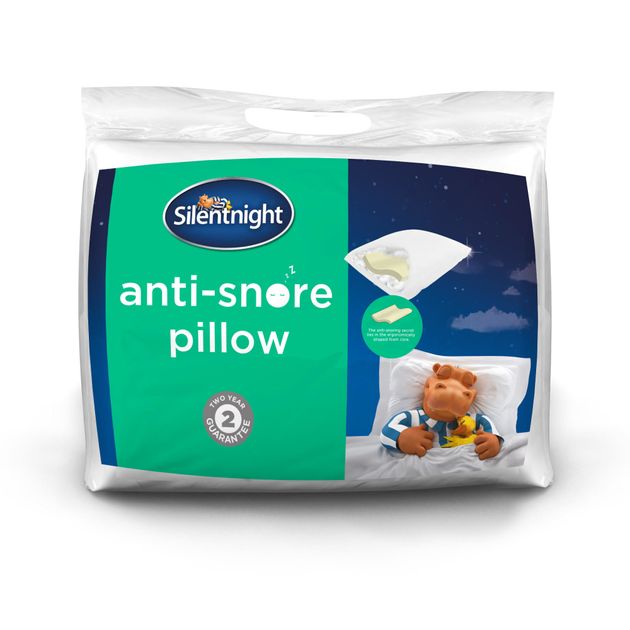
The pillow is ergonomically designed with an s-shaped foam core to align your spine, neck and head to reduce snoring. As a side-sleeper, the frankly intimidatingly comfortable-looking hippo sleeping on the packaging had me worried this wouldn’t do the job, but Silentnight claims this suits both back sleepers and those of us who prefer a single side.
The pillow is also said to have been found to cut down on snoring by half, according to the British Snoring & Sleep Apnoea Association. So we were looking at coin flip odds that this pillow would finally allow my wife some proper sleep.
The first night of testing, I have to admit it took some getting used to. I found it discomforting at first to rest my head on this new, spongy pillow and it took half an hour or so of fidgeting to feel fully comfortable.
After that, we were flying. I woke the next morning fully rested with no fuzzy memories of being rolled around or grunted at. Same again the next night, as we adjusted to this new paradise. My wife’s review? “Definitely not snoring in the way you usually would, and you weren’t waking me up.”

Sweet dreams then? Not so fast.
To add an extra layer of intrigue, I’m training for the London Marathon in April. This, obviously, involves a lot of running – up to five times a week, in fact, with increasingly long distances on the weekends. As a result, getting enough sleep to help recovery is an important part of the process, and I was keen to see how this pillow would help me out. After an exhaustingly long Sunday run, I found I couldn’t sleep through the night on my new pillow, after which I began to develop an anxiety around setting myself and the pillow just right.
To both me and my wife’s our dismay, this persisted. The following few nights, particularly after running when I needed a good night’s sleep the most, I can remember waking up multiple times a night to rejig my pillow, flip it around and turn it every which way to get myself aligned correctly with the foam. Meanwhile, I’m told my snoring returned – not to a jet engine degree, but “noticeable”.
Through a week’s trial, I was left unconvinced that this pillow was a cure to our problems. It was worsening my sleep most nights as I struggled to adapt, and the faff of ‘using’ the pillow correctly didn’t feel worth the effort. Maybe I am just one of the 50% for whom the pillow wouldn’t do the trick.
I did wonder, though, why my snoring had still been less loud over the week. To get to the bottom of things, it was back to my wife for her diagnosis.
She’d been wearing ear plugs.
Read More:
We all work hard to earn our money – so it shouldn’t feel like hard work to spend it well. At HuffPost Finds we’ll help you find the best stuff that deserves your cash, from the ultimate lipstick to a durable iron to replace the one that broke (RIP). All our choices are completely independent but we may earn a small commission if you click a link and make a purchase.
‘Tell Us A Bedtime Story!’: 7 Easy Tips On How To Make One Up For Your Kids
It sounds so simple, but there are four words at the end of a long day that strike fear into the most hardened parent: “Tell us a story!”
By the time you’ve battled the commute home from the office, done the school run, cooked dinner, fought over the remote, bathed the little rascals, wrestled them into their pyjamas and into bed, it can be hard to think of anything but a much-needed glass of wine or cup of tea.
But then the parental guilt kicks in because they’re cute, and they want you to make up a bedtime story – how can you possibly resist?
[Read More: Will Young to read ‘Two Dads’ story on CBeebies]
Cranking up the creativity to make up a bedtime tale can be difficult. Really difficult. As many as one in five parents find it impossible to tell stories off the top of their heads, but 83% of children would like to spend more time with their parents doing exactly that. And the reason many of us find it so hard? We just don’t think we’re “creative enough”.
The research, commissioned by Rory’s Story Cubes to mark National Storytelling Week, also found more than half of parents (54%) don’t tell their kids stories every night – with many relying on alternatives such as TV (45% of the time), tablets (25%) and smartphones (13%).

So, what do you do if you want to up your game? Well, the most important thing to do is to try, because you never know what will come of it. The story I made up last year for my kids was recently published – so you might discover a talent you never knew you had.
In the meantime, if you’re struggling, here are seven tips to help you make up an off-the-cuff bedtime story for your little ones:
Make It Personal
Children love seeing themselves in a story. Name the main character after them and watch their eyes light up – and if they’ve got a favourite pet, or teddy bear, talk about them, too. Let them go on the adventure together.
Keep It Simple
There’s no need to plot a bestseller or an epic fantasy series. Keep it simple by planning the setting first (A: forest, desert island, distant planet or mountains), the characters next (B: witch, wizard, fairy or pirate), and lastly, what the goal is (C: to find treasure, to rescue someone or to fight against evil). Throw your child into the mix as you go from A to B to C – et voilà: you have a story.
Believe In Yourself
Don’t tell yourself you “don’t have any imagination” – you do. We all do, so take the pressure off. Chances are, the main reason your child wants you to tell them a bedtime story in the first place is because they want to spend time with you. Give them that and you can pretty much say anything.
[Read More: 8 reasons why reading with your child is the best part of the day]
Keep It Brief
If you’re nervous about your storytelling abilities, don’t worry about dragging out a complex plot for half an hour. Pre-warn your kids that you’re very tired, but that you’d love to tell them a quick tale. Five minutes, tops.
Speak From Experience
What were your favourite films when you were a kid? In my 80s childhood, it was ‘Labyrinth’, ‘The Princess Bride’, ‘Dark Crystal’ and ‘The Goonies’. Borrow parts of the plot if it makes it easier – you’ll end up making stuff up for the bits you can’t quite remember, anyway.
Do A Funny Voice
The worse you are, the funnier they’ll find it – so it’s okay if you’re terrible at impressions. Mix it up to make it even more amusing: make your villain sound like the Queen and your fairy godmother like Darth Vader.
Turn It Into A Game
Begin the story, say a couple of sentences, then ask your child to fill in the next part. When they finish, you take over again. Granted, they’ll invariably make it about someone poo-ing their pants, or farting, but it’ll be fun (for a while).
Related…
How To Keep Your Baby Warm – But Not Too Warm – During The Cold Snap
We might pile on thermals, jumpers, jackets and scarves when we’re chilly and take them off when we need to – but how do we know when our babies need an extra layer, or are getting too warm?
Aside from the obvious (feeling their skin and seeing how warm they feel), there are few other things parents can do to make sure their little one is cosy, but not overheating.
[Read More: Our pick of the best baby snowsuits for winter]
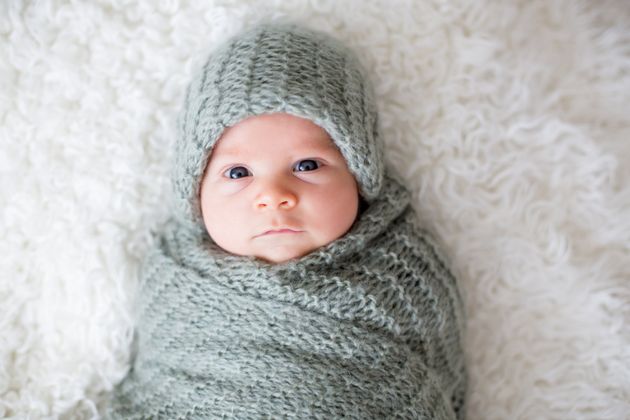
1. The Multi-Layer Approach Is Good.
When you’re out and about, the general rule of thumb is to count how many layers you are wearing, and put your little one in one more, says Sanjima DeZoysa, parent content manager, at the National Childbirth Trust (NCT). “So, if you’re in a shirt, sweater and jacket, your baby might need a vest, sleep suit, jumper and coat.”
Cosy snowsuits (find some brilliant ones here) are handy for long periods in cold temperatures when you’re outside.
2. De-Layering Is Just As Important.
Just as vital as layering-up to go out, you’ll need to layer down your baby when you’re inside. “Take off a baby’s hat and extra clothing just as soon as you come back indoors,” advises the NHS. “Even if it means waking your baby.”
The same goes for cars – keep layers to a minimum. “Cars can be icy cold to get into in the wintertime but they soon warm up,” the NCT states. “And if you’re still worried that your baby’s cold, lay a blanket over them after they’re safely strapped in.”
3. Check Their Tummy If You’re Unsure.
Little hands and tiny feet will inevitably feel cold in the winter weather, so the NCT advises to check your baby’s tummy – “it’s a much better indicator than their hands,” it advises. If their belly feels warm, but not overheated, it’s a sign your baby is pretty cosy.
[Read More: How to make your toddler wear a coat]
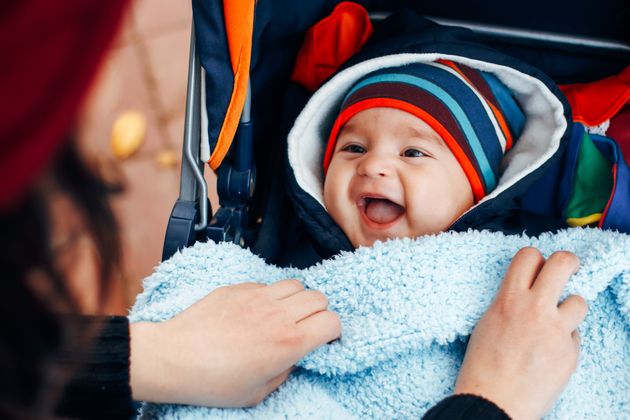
4. Make Sure They’re Comfy, As Well As Warm.
The NCT says baby clothes with natural fibres – like cotton and wool – are great for winter and help to maintain body heat, as they’re gentle and let skin breathe.
So when you’re out shopping for winter warmers, think comfort over how cute something is. “Try to choose clothes that allow your baby to move their arms and legs as easily as possible,” the charity adds. “They might prefer a couple of soft, lined cardigans rather than a big stiff coat.”
5. Keep A Cooler, Not Warmer, Bedroom For Babies At Night.
You might think the hotter the better, but err on the cooler side when putting your baby to bed at night. Babies can overheat at night if their room is too hot.
The NHS says to reduce the risk of sudden infant death syndrome (SIDS), babies should sleep in rooms heated to between 16C and 20C. If you don’t have a room temperature thermometer and you’re worried, you can download apps that give you digital temperature.
6. Avoid Lots Of Blankets At Night.
Most of the time, it’s okay to put your baby in their usual sleep suit or baby grow even when it’s cold, advises the NCT. “You can add a blanket if necessary, but always remember to put them to sleep at the bottom of their cots,” the charity advises. “That way they don’t wriggle down underneath them.”
Related…
Children Are Losing Sleep By Taking Their Phones To Bed. Here’s How To Help Them
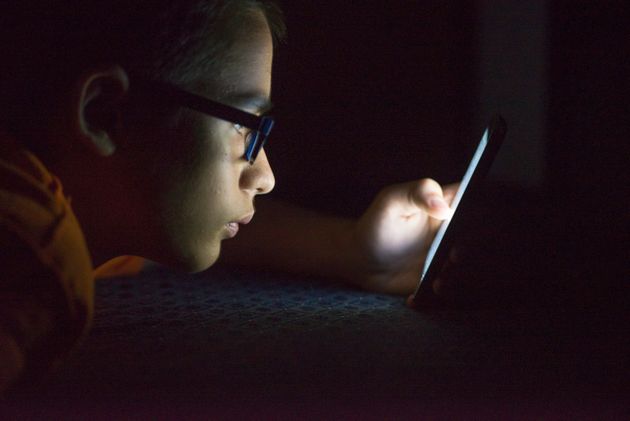
Sleep is essential for youngsters, but it’s hard to catch Zs with a phone in your hand. According to a new Ofcom report, however, that’s exactly what many kids are doing: more than half of parents with young teens let them take their devices into their bedrooms when they should be heading into the land of nod. In fact, 71% of 12-15 year-olds who own phones take them to bed.
The report, based on surveys with more than 2,000 parents and kids, also found – perhaps unsurprisingly for those who’ve spent time with teenagers recently – that more than a third of the 12-15 year-olds found it difficult to moderate their screen time. That figure is up 28% on the year before.
“It’s hard to take things off your kids, so a good proportion of 12-15 year olds are taking their phone to bed,” Yih-Choung Teh, one of the report’s authors, told Sky News. “I think it’s something families should be having a discussion about [in] ensuring that our kids have healthy lives.”
[Read More: 6 easy ways you can cut down phone time when you’re with your family]
Those discussions might not be easy (or even civil, depending on your teen), which is why we asked HuffPost UK readers if they let their kids – of all ages – take their phones to bed. And the answer was unanimous: Absolutely not.
No electronic devices at bedtime (though this has been flouted several times and has resulted in daytime bans as punishment). I stopped having my mobile phone in the bedroom as it really disrupted my sleep.
— Francesca De Franco (@TheParentSocial) January 29, 2019
No certainty not, no cartoons at least half an hour before bed. Then again my son is 3 but I think that’s a good rule for everyone
— Marie Farmer (@mcp893) January 29, 2019
Never. The big question is why would you? Bedtime is for that, slowing down and sleeping. Mobile phones have the opposite effect. My oldest is now 14 and there is never any misunderstanding about phones being left downstairs.
— Lucy Doyle (@lucycdoyle) January 29, 2019
Err hell no.
— Denise Rawls ✨ (@Denise_Rawls) January 29, 2019
no! I don’t take my phone to bed so my children don’t either! I believe we all spend too much time in front of phones every day and bed and sleep time are a way to naturally recharge our batteries away from phones. I also don’t let them use them first thing in the morning
— Zoe Woodward (@AlohaandCoffee) January 29, 2019
When you discuss unsupervised phone use with parents, they express a number of concerns: what their children might stumble upon online, what they are searching for or playing, and also, perhaps most importantly, whether their phone might be disturbing their sleep. And with reason: a recent study by the University of Sheffield and Silentnight found that children with phones, tablets or computers in their rooms got a whole hour’s less sleep, on average, than those without.
So how can we prize our kids’ phones away from them, when they’re so used to having it stuck in their hands? It’s important that parents stress the effect that constant communication can have on sleep, advises psychologist Dr Linda Papadopolous from Internet Matters. That’s particularly the case with older children. “This will help them make more informed choices about physically disconnecting by switching off at night,” she tells HuffPost UK.
[Read More: We quizzed our parents about our phone use and this is what we learned]
“Sleep is crucial to a child’s emotional development, and therefore if you spot signs that your child’s wellbeing is affected by their device, have a conversation with them about why you are concerned and consider introducing parameters such as ‘no tech once the lights go out’,” he says. For younger kids, it’s best to start the habit of “no phones in the bedroom” early.
Sleep expert Dr Nerina Ramlakhan from Silentnight, explains that parents need to make it clear to kids that phones do not belong in their bedrooms. “Children and teenager’s brains are still developing, and therefore they need the right amount of sleep, and deep sleep, to ensure that they are energised and are able to concentrate,” she argues.
“As parents, we need to be the change, and act as role models. This means we also need to not be on our phones late at night.”
Related…
Has You Baby Forgotten How To Sleep? This Is What’s Going On
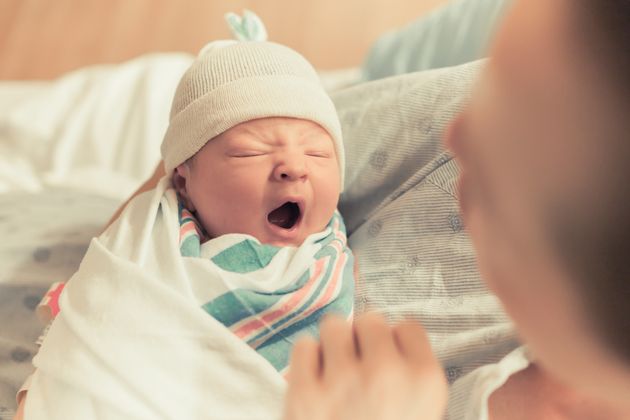
When it comes to babies, sleep affects everything. A tired adult might be slightly short-tempered or more easily confused than usual, but a tired baby is a hellscape, a waking nightmare, a shrieking banshee, Satan himself. A baby isn’t capable of quietly thinking to itself, “Oh gosh, I’m rather sleepy”. Instead, it fast tracks to the type of screams that cut straight through an adult skull.
And then, just when you think everyone’s over the worst, sleep regression raises its head and becomes a very real, very unpleasant thing. This can happen several times during the journey from baby to toddler, as developmental and behavioural milestones clash with the universal desire for a good night’s sleep.
[Read More: How long should my baby sleep for at night?]
Your little bundle of joy effectively forgets everything they knew about sleep and drags you back into the world of sleepless nights with them. The timing seems particularly cruel, coming at moments when parents feel “the sleep issue” is done and dusted and not something they need to worry about. “No more 9pm bedtimes for us now Junior is sleeping through the night!” they think. “We can stretch it out to 9:45ish!” Then all of a sudden they’re comforting a shrieking child as they watch the clock hit four AM and realise they’re 100% going to be nodding off at work the next day.
Sleep regression is another one of those things nobody thinks to mention to you before your child arrives – just one of the many surprises that come under the umbrella of “don’t let yourself get confident, sunshine”.
Never relax.

Sleep Regression At… Four Months
This first burst comes as your baby is transitioning from sleeping like, well, a baby to sleeping like a toddler. In a way it’s a misnomer – it’s a developmental leap rather than a true regression, but that’s scant comfort to exhausted parents hallucinating from lack of sleep.
While newborns go almost straight into deep, REM sleep, this stage marks a shift into the four levels of sleep that adults cycle through several times a night. Suddenly every 45 minutes or so, your baby is at a much lighter level of sleep than they were before and easily woken by anything from movement to sound to simply realising you’ve put them down. They might adjust to this quickly and learn to go back to sleep on their own, or they might really struggle.
Sleep associations are a big factor in this – if your baby always falls asleep on you and is now waking up more easily and finding you missing, they’ll go bonkers. If you feed or rock or sing them to sleep, expect to find yourself doing a lot of feeding, rocking and singing. By the 19th rendition of the ‘Grand Old Duke Of York’, every third word might be extremely rude.
The good news is that this usually only lasts for a few weeks. A few ghastly, irritable, sweaty weeks, but just a few weeks all the same. Things parents have found to help include blackout curtains, white noise machines, weighted blankets and trying to pre-empt it by putting your baby down when they’re drowsy rather than fully asleep.
Eight Months
Good news! Six months or so after battling through sleep regression, you might get to do it all again. A combination of teething and developmental leaps forward mean a lot of babies hit a point somewhere between nine months and a year where it all goes out the window.
As your baby grows more aware of the world around them, picking more up from their environment and forming connections between things, the sleep that you may be taking for granted by this point can be disrupted for another few weeks. There’s a lot going on in their little heads at this point, combined with new teeth cutting through their gums and a likely reduction in napping that can take a while to catch up with. Cue chaos.
[Read More: 20 ways to get your baby to sleep, as recommended by parents]
Recommendations for this stage include tiring your child out physically by playing a lot (while trying not to make them over-tired), but a lot of advice seems to be along the lines of just accepting that this regression will happen: “grit your teeth, sleep when you can and try not to operate any heavy machinery”. You’re also warned against getting so despondent you start bad (or in fact, regressive) habits and undo the work you’ve done – you might think about adopting co-sleeping short-term, for instance, and find you’ve actually adopted it long-term against your will.
18 Months
An 18-month-old is a complicated person. They know what you not being there means, and that screaming and throwing a tantrum might get you to come back, and get them what they want. Canines and molars are often coming in, both pretty unpleasant as they cut through the gum. Plus growth spurts can lead to even well-fed babies feeling hungry in the night. If all these things coincide, you’ve got a perfect storm.
It feels unfair – you’re used to everything being sorted and suddenly it’s all gone wrong again. You repressed the memory of how miserable you were when you never got any sleep, but suddenly it all floods back. But routine and consistency are important, however difficult it can be to stand your ground when knackered – you can’t give in to your baby’s cries on Monday and refuse to on Tuesday, it’ll just confuse them.
Everything is a tightrope and nothing is easy, but over-tiredness doesn’t help. If their sleep is disrupted at night, you might need to allow for longer napping during the day (but not so much napping they’re not tired enough to sleep at night).
This is when night-lights can come in handy. You can talk to a toddler as well – telling them they have to go to sleep and explaining why can help. There’s no point in going into excessive detail, but a straightforward message like “you need to go to sleep now because it is night time” might make more sense to them than you think.
The good news? Even if you are unlucky enough to come up against sleep regression at all these stages, they’re temporary. A few crap weeks of sleep can feel absolutely endless, but it will all pass. Or, you know, it won’t, but then you need to see a sleep consultant, and it will still ultimately end up okay. Plus you might find yourself having new life experiences like falling asleep while standing up in the shower. It’s a miracle what the tired human body can achieve.
Related…
Inspired By Marie Kondo? Here’s What Clutter Does To Your Brain And Body
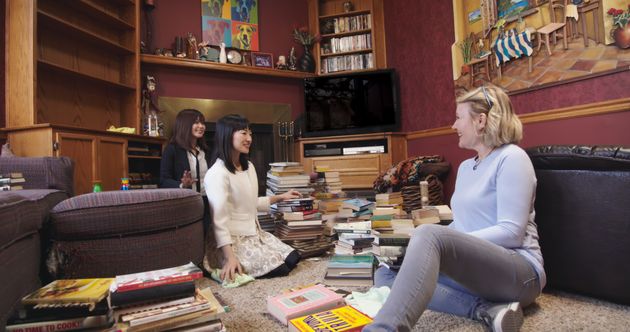
Many of us have started the year determined to be more organised: no more drawers full of plastic containers with missing lids, or lone socks.
The decluttering craze is led by Japanese tidying aficionado Marie Kondo, author of a New York Times bestseller and Netflix show Tidying Up.
Charity groups such as St Vincent de Paul are reporting a 38% increase in donations, year on year, as we get rid of the clothes, books and household items that don’t “spark joy” or have a place in our future.
And there is good reason to get on board, whether it’s via the KonMari method, or just having a good clear-out. Clutter can affect our anxiety levels, sleep, and ability to focus.
It can also make us less productive, triggering coping and avoidance strategies that make us more likely to snack on junk and watch TV shows (including ones about other people decluttering their lives).
My own research shows our physical environments significantly influence our cognition, emotions and subsequent behaviours, including our relationships with others.
Why clutter is bad for your brain
Bursting cupboards and piles of paper stacked around the house may seem harmless enough. But research shows disorganisation and clutter have a cumulative effect on our brains.
Our brains like order, and constant visual reminders of disorganisation drain our cognitive resources, reducing our ability to focus.
The visual distraction of clutter increases cognitive overload and can reduce our working memory.
In 2011, neuroscience researchers using fMRI (functional magnetic resonance imaging) and other physiological measurements foundclearing clutter from the home and work environment resulted in a better ability to focus and process information, as well as increased productivity.
And your physical and mental health
Clutter can make us feel stressed, anxious and depressed. Research from the United States in 2009, for instance, found the levels of the stress hormone cortisol were higher in mothers whose home environment was cluttered.
A chronically cluttered home environment can lead to a constant low-grade fight or flight response, taxing our resources designed for survival.
This response can trigger physical and psychological changes that affect how we fight bugs and digest food, as well as leaving us at greater risk of type 2 diabetes and heart disease.
Clutter might also have implications for our relationships with those around us. A 2016 US study, for instance, found background clutter resulted in participants being less able to correctly interpret the emotional expressions on the faces of characters in a movie.
And surprisingly, it doesn’t go away when we finally get to bed. People who sleep in cluttered rooms are more likely to have sleep problems, including difficulty falling asleep and being disturbed during the night.
Could clutter really make us fat?
Multiple studies have found a link between clutter and poor eating choices.
Disorganised and messy environments led participants in one study to eat more snacks, eating twice as many cookies than participants in an organised kitchen environment.
Other research has shown that being in a messy room will make you twice as likely to eat a chocolate bar than an apple.
Finally, people with extremely cluttered homes are 77% more likely to be overweight.
Tidy homes have been found to be a predictor of physical health. Participants whose houses were cleaner were more active and had better physical health, according to another study.
Hoarding can cause physical pain
Buying more and more things we think we need, and then not getting rid of them, is an actual disorder in the American Psychiatric Association’s Diagnostic and Statistical Manual of Mental Disorders (DSM-V). According to DSM-V, those with hoarding disorder compulsively acquire possessions on an ongoing basis and experience anxiety and mental anguish when they are thrown away.
A Yale study using fMRI showed that for people who have hoarding tendencies, discarding items can cause actual pain in regions of the brain associated with physical pain. Areas of the brain were activated that are also responsible for the pain you feel when slamming a finger in a door or burning your hand on the stove.
People who suspect they have hoarding disorder can take heart: cognitive behavioural therapy has been shown to be an effective treatment.
Tidy house, happy life?
Participants in Marie Kondo’s Netflix show Tidying Up report that her decluttering method changes their lives for the better. Indeed, her first book was called The Life Changing Magic of Tidying Up.
Research does indeed show cluttered home environments negatively influence the perception of our homes, and ultimately our satisfaction of life. The study authors note the strong effect is because we define “home” not just as a place to live, but as:
the broader constellation of experiences, meanings, and situations that shape and are actively shaped by a person in the creation of his or her lifeworld.
But it seems clutter isn’t always bad. One study showed messy desks can make us more creative. The findings suggested neat, ordered environments make us more likely to conform to expectations and play it safe, while messy ones move us to break with the norm and look at things in a new way.
This blog first appeared on The Conversation UK, and can be read here














